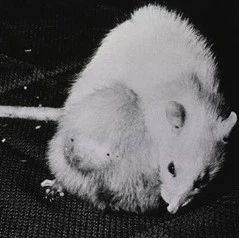9月30日,Nature在线发表了中国科学院动物研究所周琪研究组和赵小阳研究组合作完成的一项研究工作,该研究首次实现了利用基因修饰的单倍体胚胎干细胞获得健康成活的转基因哺乳动物。
单倍体细胞及其发育而成的个体是研究隐性遗传基因的理想模型。针对单倍体胚胎干细胞进行基因操作可以将基因修饰直接遗传给后代,从而避免了其他转基因方法种系嵌合等方面的要求,可以极大提高基因修饰的效率极其应用范围。但哺乳动物中除配子外并不存在天然单倍体细胞。尽管国内外的研究人员已经在哺乳动物单倍体胚胎干细胞的建立方面取得了一定的成果,但在此工作前,尚未获得通过单倍体胚胎干细胞产生的健康成活的基因修饰动物。
周琪研究组和赵小阳研究组于2009年底开始小鼠单倍体胚胎干细胞的建立工作,经历了长达2年的实验摸索,终于在2011年8月获得了由孤雄单倍体胚胎干细胞与卵母细胞受精发育成的健康小鼠。其中10只动物至今仍健康存活,并可正常繁殖后代。同时,该团队还将携带基因修饰的单倍体胚胎干细胞与卵母细胞受精,获得了28只由单倍体胚胎干细胞“受精”发育而成的基因修饰小鼠,其中有8只存活至今,并已经繁殖出下一代。
该研究为灵长类等大动物的基因功能研究及疾病模型的建立开辟了一条新的道路。目前,哺乳动物中除了大鼠与小鼠的胚胎干细胞能够作为遗传修饰的载体外,其他物种包括灵长类动物的胚胎干细胞无法进行生殖系传递,从而严重限制了利用这些物种建立疾病模型的工作。周琪等利用单倍体干细胞既能维持单倍性、又具有无限扩增能力的特性,建立了利用单倍体干细胞进行基因修饰并遗传的技术体系。这一方法有望克服目前难以获得能够稳定遗传的非啮齿类基因修饰动物的难题,对药物开发、疾病发生机制等研究工作将产生积极的促进作用。
该研究同时为研究生殖与发育的调控机制提供了模型,并提示类似技术可能对于人类致病基因的筛查和通过辅助生殖技术进行基因修正提供新的途径。
该研究工作得到了科技部、中国科学院和国家自然科学基金委的资助。中科院遗传与发育研究所的王秀杰研究员与东北农业大学的刘忠华教授及其团队成员参与了该项研究。

 Androgenetic haploid embryonic stem cells produce live transgenic mice
Androgenetic haploid embryonic stem cells produce live transgenic mice
Wei Li, Ling Shuai, Haifeng Wan et al.
Haploids and double haploids are important resources for studying recessive traits and have large impacts on crop breeding, but natural haploids are rare in animals. Mammalian haploids are restricted to germline cells and are occasionally found in tumours with massive chromosome loss. Recent success in establishing haploid embryonic stem (ES) cells in medaka fish and mice raised the possibility of using engineered mammalian haploid cells in genetic studies. However, the availability and functional characterization of mammalian haploid ES cells are still limited. Here we show that mouse androgenetic haploid ES (ahES) cell lines can be established by transferring sperm into an enucleated oocyte. The ahES cells maintain haploidy and stable growth over 30 passages, express pluripotent markers, possess the ability to differentiate into all three germ layers in vitro and in vivo, and contribute to germlines of chimaeras when injected into blastocysts. Although epigenetically distinct from sperm cells, the ahES cells can produce viable and fertile progenies after intracytoplasmic injection into mature oocytes. The oocyte-injection procedure can also produce viable transgenic mice from genetically engineered ahES cells. Our findings show the developmental pluripotency of androgenentic haploids and provide a new tool to quickly produce genetic models for recessive traits. They may also shed new light on assisted reproduction.
文献链接:Androgenetic haploid embryonic stem cells produce live transgenic mice







